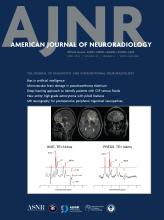Case of the Month
Section Editor: Nicholas Stence, MD
Children's Hospital Colorado, Aurora, CO
June 2019
Intracranial Chordoma
- Background/Demographics
- Chordomas are rare tumors derived from primitive notochordal remnants, usually trapped in the midline skull base and spinal column.
- As such, chordomas arise in the sacrococcygeal spine (50%)>spheno-occipital region (35%)>mobile spine (15%).
- When arising in the skull base, they tend to be midline; in distinction to chondrosarcomas, which arise off midline (unusual off-midline appearance in this case).
- Imaging
- CT: Hypodense mass, +/- amorphous calcifications (calcifications more common in chondrosarcoma as chondroid matrix), lytic osseous destruction.
- MRI: Always markedly T2 hyperintense, almost always reported as enhancing either mildly or avidly (unusual to not enhance as in this case).
- MRS: Few to no specific case reports. In this case, the presence of a choline peak is a clue to a malignant neoplasm, as opposed to an epidermoid cyst.
- Differential Diagnosis
- Chondrosarcoma (extremely rare in children).
- Epidermoid cyst (could appear similar but this case is very large, choline peak argues against).
- Ecchordosis physaliphora (also rare, no reports could be identified of a case this size).
- Treatment/Prognosis
- Surgery (complete resection if possible) and adjuvant radiotherapy.
- Local recurrence is more likely than distant metastasis.
- Progression free survival at 5 years 50-65%.






